15 spray-free strategies to protect crops from pests
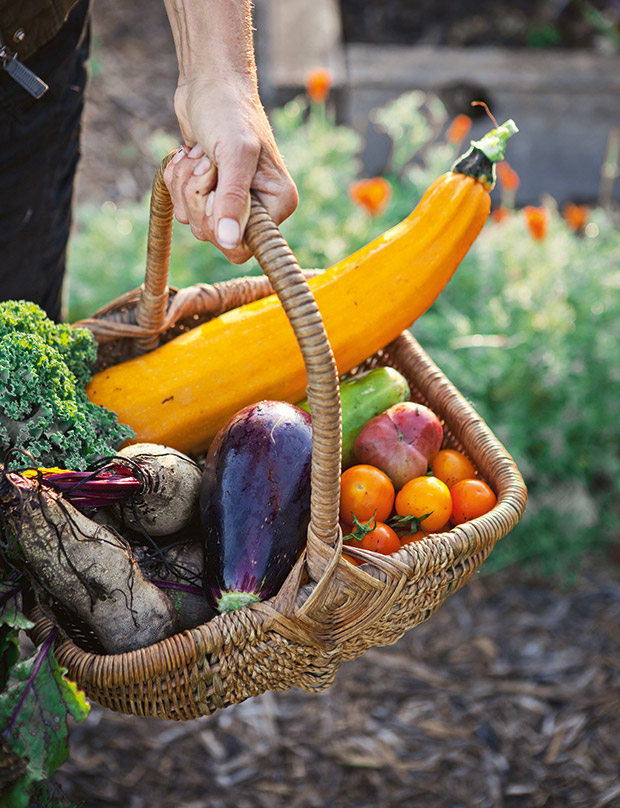
Harvest crops daily to reduce the food sources for pests.
Looking for spray-free solutions to outsmarting bugs? Here’s the ultimate guide for remaining one step ahead.
Words: Kath Irvine
Pests are part of the natural world. They flourish in monocultures where predators are absent and when plants are over-fed and over-watered.
A biodiverse garden encourages resilient plants and contains a wide mix of insects, thanks to:
• a blend of nectar and pollen-rich flowers, vegetables, and herbs;
• soil that’s covered by plant life or mulch;
• a spray-free environment;
• habitat such as areas of long grass and water sources.
BENEFICIAL INSECT POWER
Many beneficial insects eat pests, pollinate flowers, and recycle debris, including:
• parasitic wasps
• hoverflies
• ladybirds
• praying mantis
• spiders
• dragonflies
• assassin bugs
• lacewings
• beetles
• earwigs
15 WAYS TO OUTSMART BAD BUGS
Pest insects hunt by either smell or shape. You can outsmart them with a bit of disguise, camouflage, and distraction.
1. A whole bed of one kind of vegetable is like a dinner bell for pests. Plant a mix of strong-smelling flowers, herbs, and vegetables to disguise at-risk vegetables among different shapes and smells. Plant carrots with spring onions, snowpeas with calendula, or tomatoes with nasturtium, marigolds, and parsley.
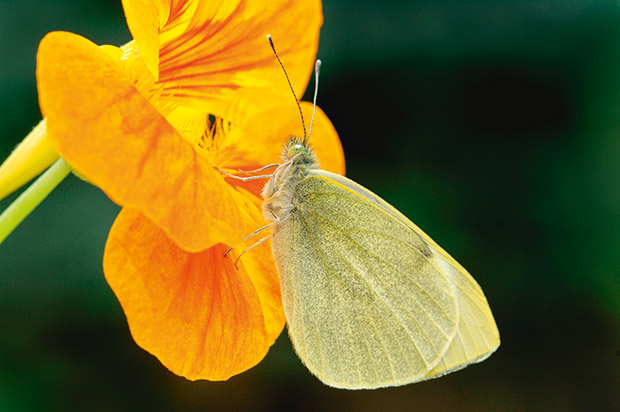
Plant nasturtiums as a catch crop to deter white butterfly caterpillars from cabbage.
2. Catch-cropping is the art of distracting pests away from vegetables with plants they prefer. Shield bugs prefer mustard and cleome to beans and tomatoes. The caterpillars of cabbage white butterflies prefer nasturtiums to cabbages.
3. Regular seaweed or fish foliar sprays give plants a boost and also disguise their scent.
FEED AND WATER CORRECTLY
Heavy pest populations can be controlled by changing feeding and watering habits.
4. Too much fertiliser (especially artificial products) and watering contribute to sweet, soft, sappy, growth which sucking insects adore. Use slow-acting, natural fertilisers such as rotten manure, worm castings, seaweed, or homemade compost, and go for a less-is-more approach.
A BALANCING ACT
Before feeding, be sure there is a need.
5. Ideally, plant heavy feeders such as brassicas, corn, and pumpkin in soil mixed with good compost. Add a side dressing (shallow-dug trench) of rotten manure or compost when they’ve grown to about 30cm. Follow them with light feeders such as carrots and peas, which won’t need any more feed.
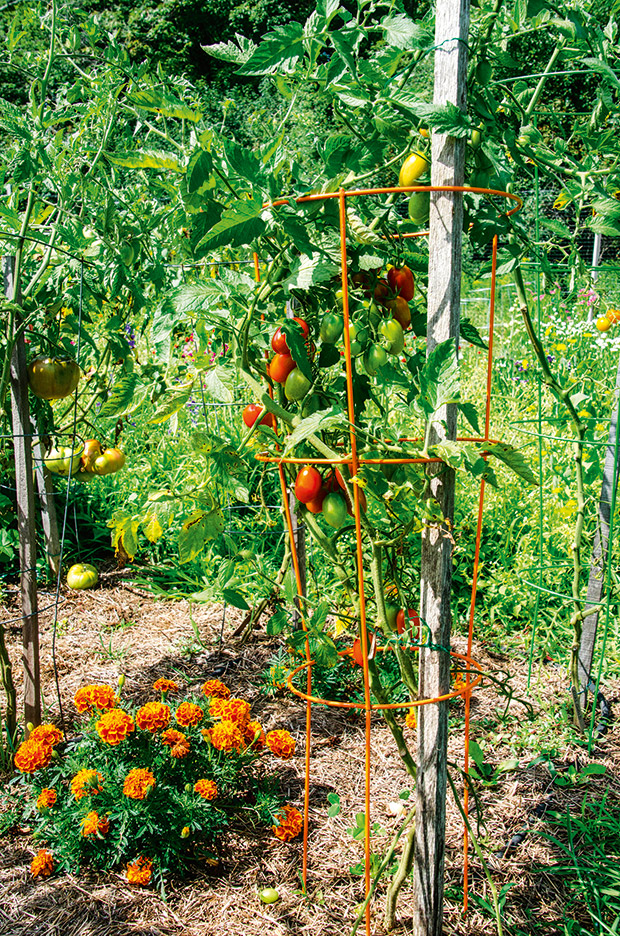
Marigolds have a strong smell, which helps to disguise the scent of tomatoes.
6. It takes practice to get the right balance of feeding and watering for each type of plant, but it can greatly reduce pests. Mostly, you need to keep the soil barely moist for mature plants.
Newly sprouted seedlings, transplants, and fruiting plants like consistently moist soil, but once established, water less often, but for longer, to encourage deep roots and resilience.
PREVENT STRESS
Stressed plants draw pests.
7. Get to know each vegetable and focus on what it needs. Is it a heavy or light feeder? What soil temperature does it enjoy?
8. Find pest-resistant varieties that suit your soil and climate. Pick the brains of neighbouring gardeners.
9. Protect soil with either mulch or cover crops.
SPRAY-FREE SOLUTIONS
Check daily on what’s happening in the vegetable patch. Spotting pests early makes it much simpler to manage them than trying to control an infestation.
10. Use your fingers. Pests such as snails, aphids, and shield bugs are easy to pick off leaves and squash.
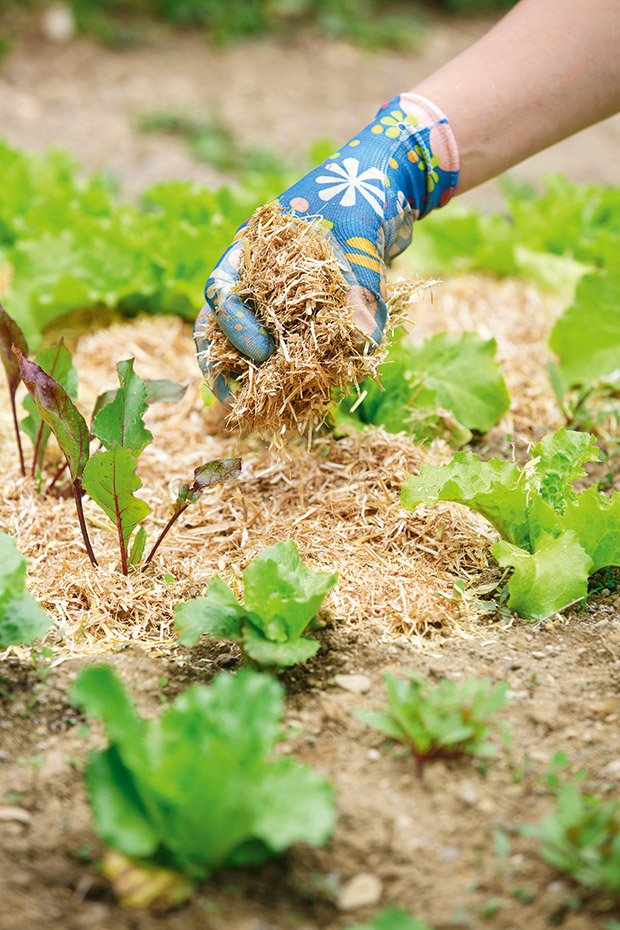
Cover bare soil with mulch.
11. Cover vulnerable crops with fine insect mesh. Use this to prevent psyllids in potatoes, cabbage whites in brassicas, and carrot fly in carrots.
12. Make or buy traps. Yoghurt traps (a spoonful of yoghurt in a small container topped up with water) attract slaters, which eat newly sprouted seeds. Beer traps (a small container filled with beer) attract snails and slugs. Yellow sticky traps (available from hardware stores) will attract whitefly.
DON’T USE AN UNSAFE SPRAY
Just because a spray says it’s ‘natural’ doesn’t make it safe. Pyrethrum, rhubarb, and garlic used in sprays are indiscriminate, also knocking off beneficial insects. Derris dust, made from the barbasco plant, is an insect neurotoxin.
13. Chemical sprays have a big impact on a garden, killing beneficial insects and soil micro-organisms. Fine droplets drift too. Every summer, people send me photos of stunted tomatoes with twisted foliage wondering what disease they have. Glyphosate spray drift is the cause.
USE A SAFE SPRAY
14. When all else fails, and a pest is getting the upper hand, I reach for one of two sprays:
• neem for all sucking/chewing insects;
• a spray with the active ingredient Bacillus thuringiensis (BT) for caterpillars. Neither are contact killers. They must be ingested to work, making them safe for bees and beneficial insects.
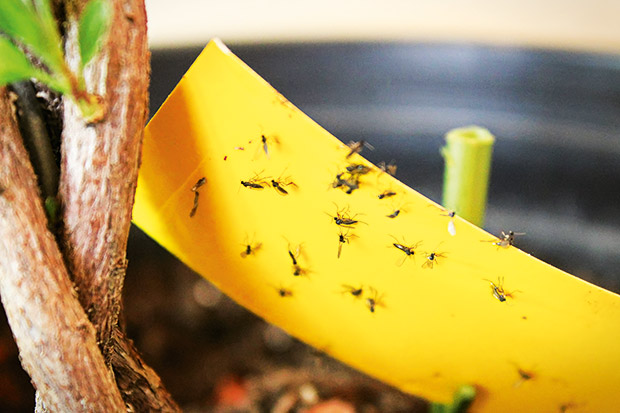
Above: yellow sticky traps, available on Trade Me or at hardware stores, catch thrips, aphids, and other flying insects, and stay sticky even after rain.
BREAK THE CYCLE
15. Harvest daily. Get out every morning with a bowl and remove anything ripe. Pests can only build a strong population if there’s something available to eat.
A daily harvest slows down a lot of munching, sucking critters. Berries are a good example. Plucking a newly ripe berry with a tiny hole is a small victory. At this stage, it’s perfectly fine for eating. Left another day, and that little hole becomes several and a haven for an army of pests.
Rotten, diseased, or pest-laden fruit or vegetables also need to be harvested daily. Feed these extras to the worm farm or chooks. If you leave them, they spread disease and provide shelter and nesting sites for more pest insects.
Read more stories like these in our special edition, Sustainability Through the Seasons, a practical guide to living a greener and more environmentally friendly life 365 days of the year.
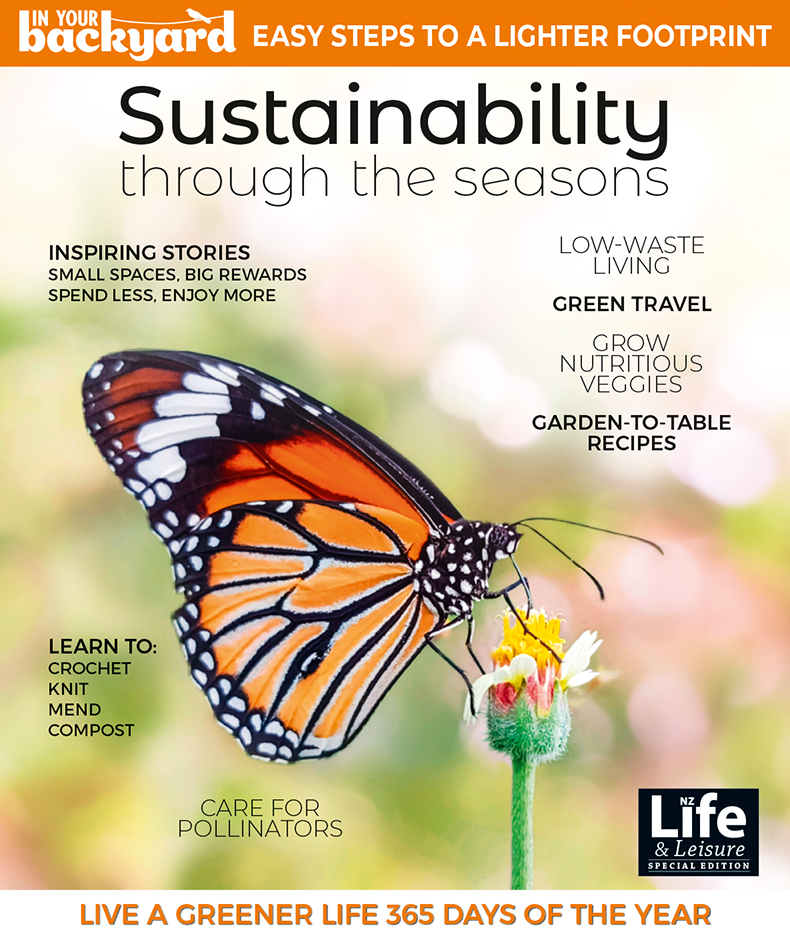
MORE HERE
How to control and prevent pests in the garden the natural way

